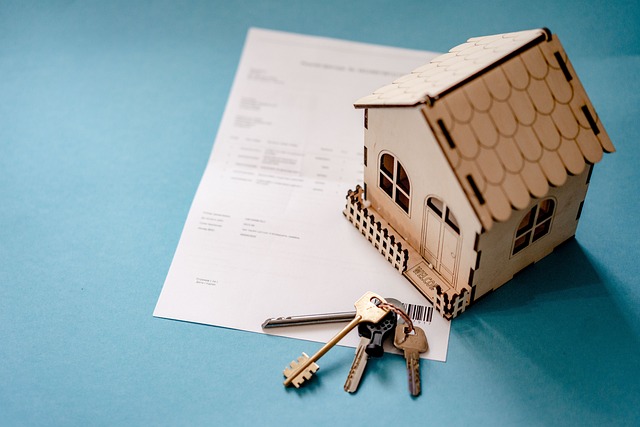Full-property coverage through Property Insurance offers businesses robust protection against diverse risks, including fire, storms, theft, and natural disasters. This comprehensive solution shields physical assets (building structure, inventory, equipment), covers business interruption losses, and provides legal liability protection. By understanding key policy components, reviewing exclusions, conducting thorough risk assessments, and staying informed about industry trends, business owners can leverage Property Insurance to safeguard their investments, maintain continuity, and recover swiftly from unforeseen events.
In today’s unpredictable business landscape, securing comprehensive protection is paramount. Full-property coverage goes beyond standard policies, offering a robust shield against diverse risks that could cripple your operations. This article delves into the intricacies of property insurance, exploring key components, benefits, and potential pitfalls. We guide you through assessing unique business risks, navigating claims, and staying informed about industry trends, empowering you to make informed decisions for optimal protection.
Understanding Full-Property Coverage: What It Entails

Full-property coverage is a comprehensive insurance solution designed to protect businesses from potential risks associated with their physical assets and operations. It goes beyond standard property insurance by offering an all-encompassing shield against various perils that could disrupt or damage a business’s primary location, including fire, storms, theft, vandalism, and more. This type of coverage ensures that businesses have the financial backing to recover and rebuild swiftly after unforeseen events.
This extensive protection includes not just the physical structure but also its contents, inventory, and even business equipment. It can help cover expenses related to temporary relocation during renovations or repairs, loss of income due to business interruption, and legal liability claims arising from accidents on the premises. By understanding what’s included in full-property coverage, business owners can make informed decisions to safeguard their investments and maintain continuity in an unpredictable world.
Key Components of a Comprehensive Property Insurance Policy

When considering full-property coverage for your business, it’s crucial to understand the key components that make up a comprehensive property insurance policy. The first essential element is building or structure coverage, which protects the physical assets of your business, including the main building and any attached structures. This includes protection against damage from perils like fire, wind, hail, and vandalism, ensuring that your business can recover if its physical space sustains significant harm.
Additionally, a robust property insurance policy should include coverage for business personal property, which refers to the belongings and assets within your business space that are non-structural in nature. This includes inventory, equipment, furniture, and other valuables, all of which play a vital role in keeping your business operational. Property insurance policies also offer protection against loss or damage caused by events like theft, flooding (if not specifically excluded), and even natural disasters, providing businesses with the financial security needed to recover and continue their operations.
Benefits of Opting for Full-Property Protection

Opting for full-property coverage offers businesses a comprehensive safety net, providing peace of mind in an unpredictable world. This type of insurance goes beyond typical policy limits by safeguarding every aspect of your business operations and assets within the property. Whether it’s a natural disaster, theft, or accidental damage, full-property protection ensures you’re not left bearing the financial burden alone.
With this robust coverage, businesses can efficiently recover and continue their operations with minimal disruption. It allows for faster rebuilding, replacement of valuable equipment, and even includes potential business interruption losses, ensuring stability during challenging times. This proactive approach to risk management is a game-changer, enabling businesses to focus on growth and success rather than navigating unexpected crises.
Common Exclusions and How to Manage Them

Many property insurance policies have specific exclusions, which are circumstances or events that are not covered under the policy. Understanding these exclusions is crucial for businesses to ensure they are adequately protected. Common exclusions include natural disasters like earthquakes, floods, and severe storms, which often require separate coverage. Additionally, certain business activities or locations may be considered high-risk, leading to exclusions for liability or property damage.
To manage these exclusions effectively, businesses should carefully review their policy documents. They can consider adding specific endorsements or riders to their property insurance to cover desired but excluded events. Regular policy assessments and updates are essential, especially after significant changes in operations, locations, or industry standards. Consulting with insurance professionals can help businesses make informed decisions to bridge coverage gaps and ensure comprehensive protection for their full-property assets.
Assessing Your Business's Unique Risks for Optimal Coverage

When considering full-property coverage for your business, understanding and assessing your unique risks is paramount to securing optimal protection. Every business operates in a distinct environment with specific hazards that can range from natural disasters like floods or earthquakes to more nuanced threats such as data breaches or equipment malfunctions. A thorough risk assessment involves evaluating these potential dangers and their likelihood of occurrence.
This process enables you to tailor your property insurance policy, ensuring it aligns precisely with your business’s needs. For example, if your operation heavily relies on specialized equipment, adequate coverage for replacement or repair in case of failure is essential. Similarly, businesses handling sensitive data should prioritize protection against cyberattacks and data loss. By carefully considering these risks, you can build a robust insurance policy that offers comprehensive full-property coverage, giving you peace of mind and financial security.
The Claim Process: Knowing Your Rights and Expectations

When a business owner faces property damage or loss, understanding the claim process is crucial for navigating their rights and expectations under full-property coverage. The first step involves reviewing the policy to identify specific conditions, deductibles, and covered perils outlined in the Property Insurance policy. This knowledge equips them to assess the situation accurately and determine whether the incident falls within the policy’s scope.
During a claim, business owners should expect clear communication from their insurance provider. Policyholders have the right to be informed about the status of their claim, any necessary documentation required, and an estimated timeline for resolution. Keep records of all communications, including emails, letters, and notes from adjusters, as these documents can serve as valuable references throughout the process.
Staying Informed: Recent Trends and Updates in Property Insurance

Staying abreast of industry trends is vital for businesses aiming to secure comprehensive property insurance coverage. The market for property insurance has seen several shifts in recent years, driven by evolving risks and technological advancements. One notable trend is the increasing demand for customized policies that cater to specific business needs. Insurers are responding by offering more flexible options, allowing businesses to tailor their coverage to address unique risks associated with their operations.
Additionally, digital transformation has had a significant impact on property insurance. Online platforms and advanced data analytics enable faster claim processing and more accurate risk assessments. This shift towards digitization enhances efficiency and provides businesses with real-time updates on policy details, claim status, and potential risks. Staying informed about these trends empowers business owners to make informed decisions when selecting their property insurance coverage.
